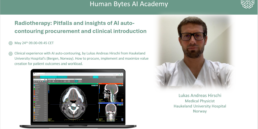H&N cancer awareness month
Introduction
In 2020, over 1.5 million of new cancer cases (7.9% of global cancer incidence) were cancers in the head and neck (H&N) region [1]. Among the different localizations (larynx, oropharynx, nasopharynx, hypopharynx, thyroid, salivary glands, oral cavity and lips), thyroid cancer is the most common (39%), followed by cancers in the oral cavity cancers (25%) and in the larynx (12%) [1].
The most significant risk factors for H&N cancers are alcohol and tobacco consumption (including passive smoking). Moreover, when used together the risk of developing cancer rises [2]. Infection with human papillomavirus (HPV) is also an increasing risk factor particularly for oropharyngeal cancer that includes the tonsils and the base of the tongue [3] .
Symptoms associated with cancers in the H&N may include: lump in the neck, sore in the mouth or throat that does not heal, difficulty and/or pain in swallowing, troubles breathing and speaking as well as changes of the voice.
Current management
From a therapeutic point of view, H&N cancers are challenging to treat because many organs in this region are associated with physiological functions such as respiration, communication and nutrition. Severe consequences such as functional impairments and structural disfigurements can compromise considerably the quality of life and social integration of the patient. Therefore, the management of H&N cancer patients is handled by a treatment approach that includes one of or a mix of the following treatment options: surgery, external or internal radiation therapy (RT) and systemic treatments.
Advances in RT?
Intensity-modulated radiation therapy (IMRT) techniques providing highly conformal dose distributions and steep dose gradients are the standard of care for RT of complex H&N tumors by ensuring maximum target coverage and organs-at-risk (OARs) sparing.
However, during the course of treatment (i.e. 70 Gy in 35 fractions), the H&N anatomy is prone to progressive changes such as patient weight loss, tumor reduction or growth, which also affects the anatomy of surrounding OARs [4-6].
To ensure safe delivery of highly conformal doses, it is crucial to ensure an accurate patient positioning with respect to the CT simulation scan. Typically, a personalized thermoplastic mask is used for patient immobilization and its positioning is verified by the acquisition of an image of the patient prior to treatment delivery [7]. This type of protocol is part of image guided RT (IGRT). Using a 3D imaging prior to each treatment fraction enables one to visualize the patient’s internal anatomy and compare it to the anatomy on which the treatment plan was simulated. In case of large anatomical variation, a decision can be made for replanning. Adaptive RT is a highly investigated topic that aims at taking corrective measures, when necessary, based on daily tumor and normal tissue changes monitored by the in-room imaging techniques [4].
Today, delivering adaptive RT to every patient is blocked by the exhaustive labor and manual time needed to perform plan adaptation. At the same time, results from ongoing clinical trials are awaited to determine the ideal re-planning framework, patient selection criteria and the real clinical benefit of performing adaptation for H&N and other localizations [8-16]. The main objectives of current clinical trials are the reduction of radiation induced side effects, namely xerostomia and dysphagia [9,16], as well as the reduction of the planning target volumes [12,15]. At the same time, the clinical impact and effectiveness of performing online adaptive RT using the commercial MR-Linac systems or CBCT-based alternatives is being evaluated [15,16] .
Due to a time-consuming adaptive RT workflow (~45min) [17] and to the fact that H&N cancer patients may not require plan adaptation on a daily basis, offline adaptive methods are often the choice for the management of this cancer localization. Several aspects are still limiting the clinical implementations of standardized offline adaptive workflows for H&N anatomy: the quality of the in-room imaging devices, accuracy of the deformable image deformation and organ propagation, time consuming task of re-contouring and re-planning on the new anatomy, and manual dose accumulation of adapted treatment fractions.
How can TheraPanacea help?
Automatic contour annotation
With Annotate, fast AI-based contour generation can be performed for a large variety of OARs (32) and lymph nodes (19) in the H&N region. This can save up to 93% of time for a dosimetrist and/or physicist and help standardize the delineation practices [18].
Synthetic CT generation from MR/CBCT images
Recent advances in AI-based synthetic CT (synCT) generation from both MR and CBCT images help eliminate the need of a new CT scan for performing patient dosimetry and plan optimization. Currently TheraPanacea offers several models for synCT generation from MR images of pelvis, abdomen and the brain as well as a model for synCT generation from CBCT images of the pelvis. Soon this model will be extended to the H&N anatomy.
Automated treatment planning
TheraPanacea is also working to release an automated plan optimization solution, which already shows preliminary promising results on the pelvis anatomy. Next steps will be to extend it to different localizations and dose prescriptions.
Vision of the future…
At the moment, two of our PhD students are working on mitigating clinical problems of H&N cancer treatments. The first topic focuses on improving image reconstruction [19]: our research now allows for the generation of detailed 3D-CT images from biplanar X-ray images typically used to position patients during treatment. By leveraging a wide array of low-level features, a generative model can accurately recreate CT images. Consequently, the need for 3D-CBCT image acquisition is eliminated, and patient positioning verification can be achieved using only biplanar images [20]. This not only reduces the time spent on positioning but also minimizes the imaging dose received by patients. Furthermore, these advancements can be utilized for data augmentation, which can enhance the training of various models.
The second project aims at exploring AI power to bridge the gap between radiology and histology, for a better understanding of the tissue microenvironment. The use of cross-modality ground truth labels will lead to an improved target definition and less variation among experts [21]. This will further benefit the development of AI-based algorithms for automatic contouring of target volumes. However, as for now, the biological information on the tumor volume can only be collected after surgery. Ultimately exploring the relation between the two modalities (2D-histological samples and 3D-CT images), the study aims at retrieving non-invasive virtual histology information from CT images only, before any surgical intervention [22-26]. Another direction of the project aims at evaluating the heterogeneity of the cells within the tumor volume and at proposing a region-based differentiated dose prescription (or “dose painting”).
Take home message
TheraPanacea is continuously supporting and advancing the field of AI-based adaptive RT workflow, making complex cases like H&N easier to manage. Be it through providing tools for offline adaptive (coming soon), working on the next generation of AI-based plans, or bridging the gap between micro-and macroscopic images, TheraPanacea is helping open the door for more patients to have access to personalized and well-informed treatment care.
References
[1] Sung H, Ferlay J, Siegel RL, Laversanne M, Soerjomataram I, Jemal A, et al. Global Cancer Statistics 2020: GLOBOCAN Estimates of Incidence and Mortality Worldwide for 36 Cancers in 185 Countries. CA Cancer J Clin 2021;71:209–49. https://doi.org/10.3322/CAAC.21660.
[2] Hashibe M, Brennan P, Chuang SC, Boccia S, Castellsague X, Chen C, et al. Interaction between tobacco and alcohol use and the risk of head and neck cancer: pooled analysis in the International Head and Neck Cancer Epidemiology Consortium. Cancer Epidemiol Biomarkers Prev 2009;18:541–50. https://doi.org/10.1158/1055-9965.EPI-08-0347
[3] Gillison ML, D’Souza G, Westra W, Sugar E, Xiao W, Begum S, et al. Distinct risk factor profiles for human papillomavirus type 16-positive and human papillomavirus type 16-negative head and neck cancers. J Natl Cancer Inst 2008;100:407–20. https://doi.org/10.1093/JNCI/DJN025
[4] Morgan HE, Sher DJ. Adaptive radiotherapy for head and neck cancer. Cancers Head Neck 2020 51 2020;5:1–16. https://doi.org/10.1186/S41199-019-0046-Z.
[5] Chen AM, Daly ME, Cui J, Mathai M, Benedict S, Purdy JA. Clinical outcomes among patients with head and neck cancer treated by intensity-modulated radiotherapy with and without adaptive replanning. Head Neck 2014;36:1541–6. https://doi.org/10.1002/HED.23477
[6] Brouwer CL, Steenbakkers RJHM, van der Schaaf A, Sopacua CTC, van Dijk L V., Kierkels RGJ, et al. Selection of head and neck cancer patients for adaptive radiotherapy to decrease xerostomia. Radiother Oncol 2016;120:36–40. https://doi.org/10.1016/J.RADONC.2016.05.025
[7] Grégoire V, Boisbouvier S, Giraud P, Maingon P, Pointreau Y, Vieillevigne L. Management and work-up procedures of patients with head and neck malignancies treated by radiation. Cancer/Radiotherapie 2022;26:147–55. https://doi.org/10.1016/j.canrad.2021.10.005.
[8] ClinicalTrials.gov. Adaptive Radiotherapy for Head and Neck Cancer n.d. https://clinicaltrials.gov/ct2/show/NCT03096808.
[9] ClinicalTrials.gov. MRI – Guided Adaptive RadioTHerapy for Reducing XerostomiA in Head and Neck Cancer (MARTHA-trial) (MARTHA) n.d. https://clinicaltrials.gov/ct2/show/NCT03972072.
[10] Clinicaltrials.gov. PEARL PET-based Adaptive Radiotherapy Clinical Trial (PEARL) n.d. https://clinicaltrials.gov/ct2/show/NCT03935672.
[11] ClinicalTrials.gov. Comparison of Adaptive Dose Painting by Numbers With Standard Radiotherapy for Head and Neck Cancer. (C-ART-2) n.d. https://clinicaltrials.gov/ct2/show/NCT01341535.
[12] ClinicalTrials.gov. Adaptive, Image-guided, Intensity-modulated Radiotherapy for Head and Neck Cancer in the Reduced Volumes of Elective Neck n.d. https://clinicaltrials.gov/ct2/show/NCT01287390.
[13] ClinicalTrials.gov. Adaptive Radiation Treatment for Head and Neck Cancer (ARTFORCE) n.d. https://clinicaltrials.gov/ct2/show/NCT01504815.
[14] Heukelom J, Hamming O, Bartelink H, Hoebers F, Giralt J, Herlestam T, et al. Adaptive and innovative Radiation Treatment FOR improving Cancer treatment outcomE (ARTFORCE); a randomized controlled phase II trial for individualized treatment of head and neck cancer. BMC Cancer 2013;13. https://doi.org/10.1186/1471-2407-13-84.
[15] Bahig H, Yuan Y, Mohamed ASR, Brock KK, Ng SP, Wang J, et al. Magnetic Resonance-based Response Assessment and Dose Adaptation in Human Papilloma Virus Positive Tumors of the Oropharynx treated with Radiotherapy (MR-ADAPTOR): An R-IDEAL stage 2a-2b/Bayesian phase II trial. Clin Transl Radiat Oncol 2018;13:19–23. https://doi.org/10.1016/J.CTRO.2018.08.003.
[16] ClinicalTrials.gov. A Prospective Study of Daily Adaptive Radiotherapy to Better Organ-at-Risk Doses in Head and Neck Cancer (DARTBOARD) n.d. https://clinicaltrials.gov/ct2/show/NCT04883281.
[17] Güngör G, Serbez İ, Temur B, Gür G, Kayalılar N, Mustafayev TZ, et al. Time Analysis of Online Adaptive Magnetic Resonance–Guided Radiation Therapy Workflow According to Anatomical Sites. Pract Radiat Oncol 2021; 11:e11–21. https://doi.org/10.1016/J.PRRO.2020.07.003.
[18] Blanchard, P. , Grégoire V., Petit C. et al. A Blinded Prospective Evaluation Of Clinical Applicability Of Deep Learning-Based Auto Contouring Of OAR For Head and Neck Radiotherapy. International Journal of Radiation Oncology, Biology, Physics, Volume 108, Issue 3, e780 – e781, https://doi.org/10.1016/j.ijrobp.2020.07.239
[19] A. Cafaro, T. Henry, J. Colnot, Q. Spinat, A. Leroy, P. Maury, A. Munoz, G. Beldjoudi, et al. OC-0443 Full 3D CT reconstruction from partial bi-planar projections using a deep generative model. accepted abstract at ESTRO 2023, 12-16th May, Vienna, Austria
[20] A. Cafaro, T. Henry, Q. Spinat, J. Colnot, A. Leroy, P. Maury, A. Munoz, G. Beldjoudi, et al. PO – 1649 Style-based generative model to reconstruct head and neck 3D CTs. accepted abstract at ESTRO 2023, 12-16th May, Vienna, Austria
[21] Leroy, A., Paragios, N., Deutsch, E., Grégoire, V., Mitrea, D., Pêtre, A., Sun, R., Tao, Y.G., ESTRO 2022. MO-0476 Statistical discrepancies in GTV delineation for H&N cancer across expert centers. Radiotherapy and Oncology 170, S426–S427. https://doi.org/10.1016/S0167-8140(22)02370-2
[22] Leroy, A., Shreshtha, K., Lerousseau, M., Henry, T., Estienne, T., Classe, M., Paragios, N., Grégoire, V., Deutsch, E. Magnetic Resonance Imaging Virtual Histopathology from Weakly Paired Data. Presented at the MICCAI Workshop on Computational Pathology, 2021, PMLR, pp. 140–150.
[23] Leroy, A, Shreshtha, K., Lerousseau, M., Henry, T., Estienne, T., Classe, M., Paragios, N., Deutsch, E., Grégoire, V., ESTRO 2021. OC-0522 Cell-Rad: Towards Histology-driven Radiation Oncology from Multi-Parametric MRI. Radiotherapy and Oncology 161, S407–S408.
[24] Leroy, A., Lerousseau, M., Henry, T., Estienne, T., Classe, M., Paragios, N., Deutsch, E., Grégoire, V., ESTRO 2022. PO-1613 AI-driven combined deformable registration and image synthesis between radiology and histopathology. Radiotherapy and Oncology 170, S1400–S1401.
[25] A. Leroy, A. Cafaro, V. Lepetit, N. Paragios, E. Deutsch, V. Grégoire. OC‑0448 Bridging the gap between radiology and histology through AI‑driven registration and reconstruction. accepted abstract at ESTRO 2023, 12-16th May, Vienna, Austria
[26] A. Leroy, A. Cafaro, A. Champagnac, M. Classe, G. Gessain, N. Benzerdjeb, P. Gorphe, P. Zrounba, V. Lepetit, N. Paragios, E. Deutsch, V. Grégoire. MO‑0714 Statistical comparison between GTV and gold standard contour on AI‑based registered histopathology. accepted abstract at ESTRO 2023, 12-16th May, Vienna, Austria
Related Posts
25 June 2024
Unlocking the Potential of AI Auto-Contouring in Radiotherapy at HELSE Bergen [WEBINAR]
Clinically Relevant AI in Radiation…
24 October 2023
Innovations in Radiation Oncology: Harnessing AI for better patients outcomes [WEBINAR]
Clinically Relevant AI in Radiation…




